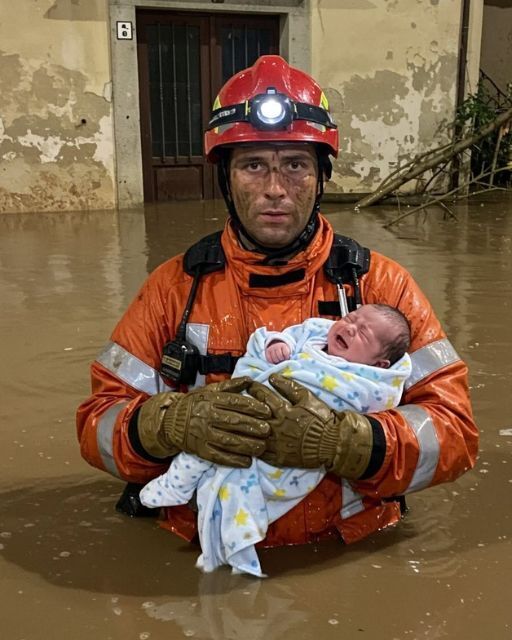I can’t remember a period when he wasn’t with Search & Rescue. He spent years practicing, putting his life on the line, and pushing his body into places that most people wouldn’t even consider of going. I watched him walk into a mess like it was nothing.
He has carried full-grown men out of mudslides as the ground was breaking apart under his feet. I’ve seen him use only his strength and willpower to climb onto roofs that were ready to collapse down and pull people out who were still alive.
When the sonar broke down and everyone else was too terrified to go, he even jumped into the dark flooding without any support. He couldn’t tolerate the idea that someone might still be down there waiting. He wasn’t afraid, he didn’t stop, and he wasn’t very afraid of being rattled. That’s why the picture upset me so much: I had never seen him look like that in all those years. I could tell something was wrong with his eyes, even though the picture from the satellite phone was hazy.

He sent the picture with a short comment that said, “We got the baby out of Building 6.” I didn’t think about it twice at first; he’s sent me a lot of these updates over the years. But then the sentences started to make sense, and I felt uneasy, like a slow poison. I knew Building 6 well, which is why this happened. Everyone in the family did. It wasn’t a place to live. There didn’t need to be a baby there.
Building 6 used to be a small, cozy bakery that made the street smell like bread in the morning. But years ago, it was sold, torn down, and transformed into an office that anyone could rent for a short time. The flickering fluorescent lights, cubicles, and workstations make it feel cold and impersonal. There are no beds. No families.
There is no reason for a baby to be there. And what about the door in front? Steel that has been strengthened and closed up, with rust creeping around the hinges. The papers state it hadn’t been opened in a long time. That was the hard part of taking the photo.
I couldn’t get rid of it, so I zoomed in on the picture and stared at it until my eyes hurt. The fleece blanket that covered the child was soft and delicate and had stars and clouds on it. My stomach dropped. It wasn’t just any blanket; it was the one. The one our aunt had spent hours making by hand, delicately weaving each cloud and sewing each star. She made it six months ago as a gift for her daughter’s new baby boy.
But the baby never came back home. He was dead when he was born. When they buried him, my aunt made sure that blanket was with him in the small white casket. She explained it was the only way she could keep him warm. We all stood there in stillness that day, watching her hands linger on the fabric before the lid closed. There was no question about it. The blanket that covered the baby should have been on the floor.
I didn’t want to say anything. The idea itself felt cruel and wrong, like my mind was playing tricks on me while I was depressed and in distress. But the more I looked, the more I felt like I couldn’t breathe. My chest got tight. Part of me wanted to believe that it was just a coincidence, like when a lot of families buy the same cloth.
But I knew it wasn’t true deep down. It just couldn’t be. The stitches were different from the others. They were hers. There are differences between each cloud and each star. This item wasn’t manufactured for a lot of people; it was made by hand. Not the same. You can’t mix it up with anything else.
My phone rang before I could talk to him about it. It was my cousin. I had only heard her voice shake like that once before, the night of the burial. She didn’t ask how I was doing or whether I’d heard the news. She only said one thing: “You have to come over.” “It’s about the baby” now.
